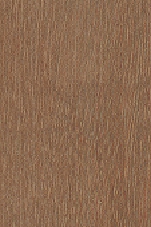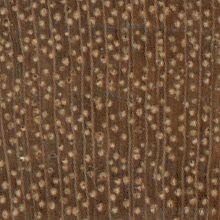
SIMPOH (Dillenia grandifolia)
Trade Name
Simpoh
Scientific Name
Dillenia grandifolia Wallich ex Hook.f. & Thomson
Family
Dilleniaceae
Common Names
Ampalu (Indonesia); Simpoh jangkong (Malaysia); Simpoh lichin (Sarawak); Simpoh daun merah (Malaysia); Simpur kijang (Indonesia); Mempelu (Indonesia)
Scientific Name Synonyms
Dillenia scortechinii (King) Ridley; Dillenia eximia Miq.
Description Of The Tree
Botanical Description
It is a fairly large deciduous tree up to 40 m tall, with straight bole branchless for up to 30 m and up to 75 cm in diameter having large buttresses up to 3 m high merging into stilt roots.
Natural Habitat
It is common in primary and old secondary forests, up to 300 m of altitude.
Wood Identification
Anatomic Description Of Wood
Wood diffuse porous. Vessels exclusively solitary (over 90%). Tangential diameter of vessel lumina 200 micras or more (large). Colored deposits in heartwood vessels. Occasionally tyloses common. Vessels per mm2 5 to 20. Intervessel pits scalariform. Vessel-ray p Apotracheal axial parenchyma diffuse and/or diffuse in aggregates. 5 to 8 cells per parenchyma strand. Rays less than 4 per mm (rare). Rays of two distinct sizes. Ray height more than 1 mm. Larger rays more than 4 seriate. Body ray cells procumbent with mostly 2 to 4 rows of upright and/or square marginal cells (Kribs-II). Fibers with distinctly bordered pits.
-
 Wood Macro Photo Tangential Plane
Wood Macro Photo Tangential Plane
-
 Wood Micro Photo Of Transversal Section
Wood Micro Photo Of Transversal Section
Availability
Cites Status
Unrestricted
General Wood Description
Color
The heartwood is red-brown to dark reddish-brown, sometimes with a purplish tinge, and usually not demarcated from the slightly paler sapwood.
COLOR INDEX (1=Black, 7=Light yellow,white)
4
Grain
The grain is straight or, more usually, interlocked.
Texture
The texture is moderately coarse and even.
Natural Durability
The wood is susceptible to dry-wood termites, blue stain and decay fungi.
Natural durability index (1= Very high durability, 7=Vey low durability)
6
Silica Content
Silica Content: It contains 0.1% silica. Silica Value: 0.1
Resistance To Impregnation
It can be readily impregnated with preservative substances.
Wood Physical Properties
Basic Density or Specific Gravity (O.D. weight/vol. green) (g/cm³)
0.71
Air-dry Density (Weight and volume at 12%MC) (g/cm³)
0.80
Total shrinkage Tangential (Saturated to 0%MC) (%)
7.0
Total shrinkage Radial (Saturated to 0%MC) (%)
4.0
Drying Defects
Ease of Drying: The timber seasons fairly slowly. Drying Defects: It is particularly prone to splitting and fungal staining during seasoning. Some warping and splitting may occur during kiln drying. Kiln Schedules: Kiln drying is fairly easy as long as slow schedules are used.
Recommended Dry Kiln Schedule
UK-C; US-T3-C2
Dimensional stability ratio (Total Tangential Shrinkage %/Total Radial Shrinkage %)
1.8
Wood Chemical Properties
Wood Mechanical Properties
Bending Strength (MOR),12%MC (kgf/cm²)
774
Stiffness (MOE) 12%MC (kgf/cm²)
145717
Compression parallel to fiber 12%MC (kgf/cm²)
397
Workability
Sawing
Sawdust can block the blades.
Rotary Veneer Cutting
It possible to produce decorative sliced veneer. Tests with this species in Indonesia showed that the peeled veneers of 1.5-mm thickness (without pretreatment at a 91 degrees peeling angle) become wavy after drying.
Sliced Veneer
It possible to produce decorative sliced veneer. Tests with this species in Indonesia showed that the peeled veneers of 1.5-mm thickness (without pretreatment at a 91 degrees peeling angle) become wavy after drying.
Machining
Wood processing is reported to be easy.
Planing
Planing of this species is reported to be easy.
Boring
Boring operations are rated as easy to fair.
Nailing
It needs pre-bore for nails, but it screws well. The nail holding properties are poor.
Gluing
Gluing of this species is easy.
Finishing
Finishing is somewhat rough otherwise good. Filling is necessary.
REFERENCED USES
End Uses Summary
HOUSING GENERAL, beams, joists, flooring, frames, steps, panelling, FURNITURE AND CABINETS, PLYWOOD AND VENEER, Decorative veneer, PACKING, pallets, NAVAL CONSTRUCTION, OTHER AND MUSICAL INSTRUMENTS, moldings
General Housing
- 10 - Silica in Timbers
Beams
- 11 - Prospect: The wood database
Joists
- 12 - Tropical timbers of the world. Part I-Tropical American Species
Flooring
- 14 - Handbook of Hardwoods
Frames
- 16 - Woods of the World
Steps
- 17 - Tree Conservation Database
Paneling
- 18 - W3TROPICOS Missouri Botanical Garden
Furniture Cabinets
- 21 - Tropical timbers of the world. Part III-Southeast Asian and Oceanian Species.
Panels, Veneers
- 25 - Directory of Timber Trade Malaysia
Decorative veneer
- 28 - Ministry of Agriculture, Fisheries & Forest of Fiji
Packing
- 45 - Recopilación y Análisis de Estudios Tecnológicos de Maderas Peruanas
Pallets
- 48 - The strength properties of timbers
Shipbuilding
- 55 - Tropical Timber Atlas of Latin America
Molding
- 79 - Padronização da Nomenclatura Comercial Brasileira das Madeiras Tropicais Amazônicas, Sugestão
Please Provide Information To View Producer Information